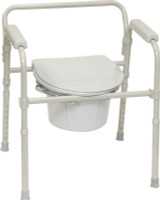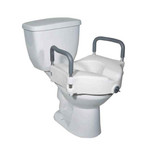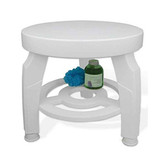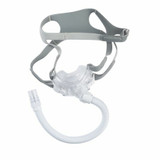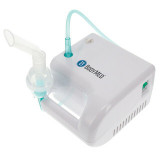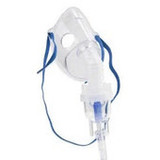
The Caregiver Guide - Manage Aggression and Defiant Behavior
In this Caregiver Guide series, we’ve written many times about caregivers' physical and emotional burdens. And there’s no denying they have them. But spare a thought for the care recipient. For them, it can be equally difficult. Requiring care means that the person cannot do certain things for themselves. This frequently causes frustration, which can translate into aggression and defiant behavior.
Challenging behavior and aggression aren't uncommon among care recipients, especially as they age and experience changes in their physical, emotional, and cognitive health. The prevalence is significantly higher among people with dementia, as high as 30%, according to this study published by the National Center for Biotechnology Information.
Understanding Challenging Behavior
Challenging behavior manifests in several ways: agitation, aggression, resistance to care, or verbal outbursts. This behavior can result from underlying health conditions, pain, discomfort, or communication difficulties. It's important to recognize that the behavior doesn’t reflect your skills as a caregiver but rather a response to a particular situation or condition.
Understanding the causes and triggers of defiance and aggression empowers you to manage them. Common causes include pain or discomfort, unmet needs, confusion or frustration, or changes in routine or environment. By identifying these triggers, you can proactively address them and potentially prevent challenging behavior from escalating.
Effective Communication
Active listening and showing empathy can often make a significant difference in defusing an outburst. By genuinely listening to your patient, you can better understand their needs and concerns. Empathy lets you put yourself in their shoes and respond with compassion and understanding.
Nonverbal communication, such as gestures, facial expressions, and body language, can help convey your understanding and support. Sometimes, words alone may not be enough to communicate effectively, especially if your patient struggles to express themselves verbally.
Clear and direct communication is essential when addressing challenging behaviors. Use simple and concise language, speak slowly, and maintain eye contact. Avoid jargon or complex sentences that may confuse or frustrate the person. Be patient and give them time to respond.
Positive Reinforcement
Positive reinforcement involves rewarding good behavior with praise, encouragement, or incentives. Positive reinforcement encourages the person you are caring for to focus on behaving in a desirable manner. Celebrate success, no matter how small, and acknowledge their efforts.
The rewards should be meaningful to the person you are caring for, like a favorite snack, a shared activity, or words of praise. It’s important to be consistent. Establish clear expectations and consistently reinforce the desired behavior. Be patient, and do not give up too quickly. Consistency helps create a sense of stability and predictability, reducing the likelihood of challenging behavior.
Set Boundaries and Realistic Expectations
Setting clearly defined boundaries ensures that you reserve time for yourself, helps you maintain your own well-being, and may prevent caregiver burnout. Establish limits on what you are comfortable doing and communicate them effectively.
Realistic goals and expectations prevent misunderstandings and disillusionment. Understand that progress may be gradual, and setbacks are a normal part of the caregiving journey. Be patient and adjust your expectations as required. Celebrate small victories and focus on continuous improvement rather than perfection.
Create a Safe and Supportive Environment
A safe and supportive environment promotes relaxation and comfort and avoids the build-up of frustration and aggression. Soft lighting, soothing colors, and familiar objects create a calming atmosphere for everyone involved. Also, try to avoid sudden loud noises.
Eliminate potential hazards that can cause accidents or injuries. Install grab bars, secure loose rugs, and ensure the space is clutter-free. It's also important to have a plan for emergencies, including a list of emergency contacts and any necessary medical information.
Crisis Intervention and De-escalation
Difficult situations are bound to arise when caregiving, and it's crucial to have crisis intervention and de-escalation strategies. Understanding how to defuse tense situations and redirect challenging behaviors helps to maintain a safe and positive caregiving environment. Stay calm, think on your feet, and remember you can handle the unexpected.
Try techniques such as distraction and diversion, or use calming techniques like deep breathing or grounding exercises. It's also important to listen actively and validate the emotions of the person you're caring for. Acknowledging their feelings can help defuse aggression or tension and find common ground. And remember, humor can also be a powerful tool.
Patience is a virtue but also a skill that can be developed over time. Remember that caregiving is a journey that involves ups and downs, and not every day will be smooth sailing. Practice patience with yourself and your patient, and be prepared to adapt and adjust your approach as needed. Sometimes, a little flexibility can go a long way in diffusing challenging situations.
Self-Care and Stress Management
It's easy to forget about yourself when you’re focused on caring for someone else. But here's a friendly reminder: self-care is essential. Just like you can't pour from an empty cup, you can't provide quality care if you're running on fumes. So, take a step back, take a few deep breaths, and learn to prioritize your own well-being.
Caregiving can be emotionally and physically demanding, leading to severe stress and burnout. To prevent reaching your breaking point, you must incorporate stress management strategies into your routine. Make time to engage in activities that bring you joy, such as hobbies or exercise, and set boundaries to maintain work-life balance. Practice relaxation techniques like deep breathing or meditation to calm your mind.
We’ve said this many times: you don't have to walk this road alone. Seek support from friends, family, or fellow caregivers who understand what you're going through. Sometimes, all you need is a listening ear or a good laugh to lighten the load. Remember, a problem shared is a problem halved, and a funny story shared is a moment of relief.
Reach out to support groups and online forums, or even join a local association dedicated to caregivers. Explore the resources available in your local area, such as respite care services or home health agencies. These resources can provide a much-needed break, additional assistance, or educational materials to help you navigate the ups and downs of caregiving. Remember, it takes a village!
In conclusion, challenging behavior requires patience, understanding, and practical strategies. In this article, we’ve discussed some strategies to help you deal with episodes of aggression or agitation more effectively or create an environment that avoids agitation and frustration. We also remind you to prioritize your own well-being.
We hope this information will prove valuable if you are faced with challenging behavior. Rest assured, at LL Medico, we understand the demands of caregiving and strive to support caregivers by providing top-quality products at competitive prices. Call the LL Medico team at (855) 422-4556 or email [email protected] for all your incontinence products, nutritional supplements, home and bath requirements, and much more.












































































